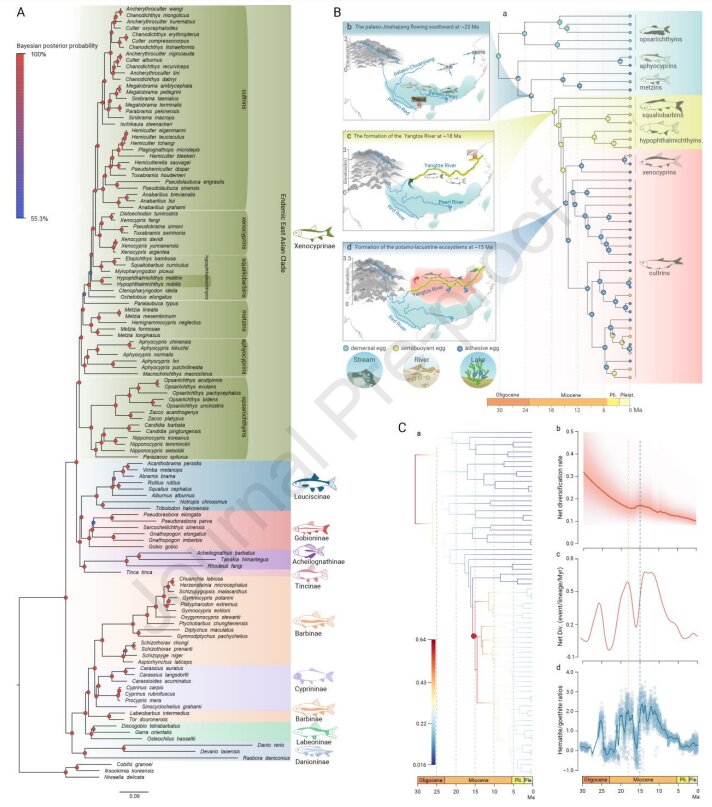The Yangtze River, one of the longest rivers in the world, is a significant component of China's water and ecological resources. Despite its ecological importance, the spatiotemporal evolution of the Yangtze River system has remained challenging to understand. However, a new study led by Prof. Xie Ping from the Institute of Hydrobiology (IHB) of the Chinese Academy of Sciences provides new insights into the co-evolution of the Yangtze River and its biodiversity using phylogenetic and fossil evidence.
Ancestral Distribution and Egg Types of Endemic Cyprinids
The researchers reconstructed the increased spatiotemporal resolution for the co-evolutionary histories of the Yangtze River and its biodiversity, and highlighted biological evidence concerning the geomorphological dynamics of the Yangtze River. Through mitochondrial phylogenomics analysis of Cyprinidae calibrated by 15 fossils, the researchers inferred the diversification dynamics, ancestral distribution, and egg types of the endemic East Asian cyprinids.
The researchers found that prior to the formation of the Yangtze River, the ancestors of endemic East Asian cyprinids were confined to southern East Asia between the palaeo-Pearl and palaeo-Red Rivers during the Oligocene. At that time, the palaeo-Jinshajiang flowed southwards to the South China Sea roughly along the course of the modern Red River. By ~18 Ma, the endemic East Asian cyprinids dispersed into the Yangtze River basin and evolved into fishes laying semibuoyant eggs, indicating that a modern Yangtze riverine ecosystem had formed around the Oligocene-Miocene boundary (~18–23 Ma) in response to regional surface uplift and large strike-slip tectonics and climatic changes.
Yangtze River System Development
By ~15 Ma, the endemic clade of East Asian cyprinids evolved into fishes spawning adhesive eggs again, coinciding with a rise to a peak in the net diversification rate of this endemic clade and a high intensity of the East Asian summer monsoon, indicating that the Yangtze River system probably had developed into a potamo-lacustrine ecosystem with high productivity by the middle Miocene.
The study constrains the ages of important events in the geological and ecological evolution of the Yangtze River and provides a new paradigm for the reconstruction of the Yangtze's geological and life evolution.
Implications of the Study
The findings of the study have significant implications for understanding the evolution of freshwater fishes and river systems in South and East Asia. The researchers suggested that the geomorphological process of river capture contributes substantially to evolutionary diversification in freshwater fishes. Furthermore, the reconstruction of the phylogeographic dynamics of freshwater fishes can help constrain the spatiotemporal evolution of the river system.
Journal Information: Feng Chen et al, The evolutions of the Yangtze River and its biodiversity, The Innovation (2023). DOI: 10.1016/j.xinn.2023.100417




0 Comments